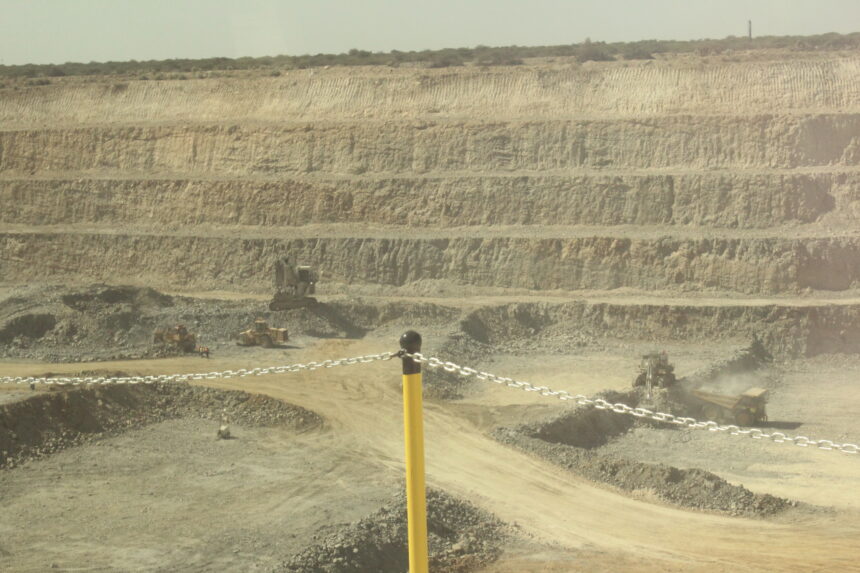B2Gold Namibia announced that it contributed a total of N$2.4 billion in direct taxes to the government in 2024.
This represents 57% of its N$4.1 billion profit before tax.
When combined with indirect taxes and corporate social responsibility (CSR) spending, the company’s total contribution to government reached 61% of its pre-tax profit.
The mine last year retrenched 138 workers, of whom 95 undertook the voluntary retrenchment deal.
B2Gold Country Manager John Roos revealed this in an interview with Nampa on Monday on the sidelines of a media engagement.
He said by the end of 2025, only 400 out of 700 employees will be employed at the mine.
A memo issued by the company in 2023 stated that the Otjikoto Mine had been experiencing uncertainty about the future, and a phased mine closure was imminent.
“Despite our best efforts, B2Gold Namibia must commence with a phased mine closure process ,which will affect the mine site and Windhoek office staff,” its management said at the time.
It added that processing and milling of low-grade stockpiles will, however, continue until 2031, on condition that it is economically viable.
Roos said between April and December 2024, they retrenched around 138 employees.
By the end of this year, they will be through with the retrenchment phase.
B2Gold Namibia in its 2023 memo stated that it remains committed to the Otjikoto Mine, and continues to invest a considerable amount of money in exploration activities around the mine, with the hopes that the project’s life can be extended.
The workforce reduction plan, the company said, is based on a ramp-down schedule, which was finalised in 2022.
Notwithstanding the retrenchments, the company on Monday announced that in 2024, the Otjikoto Mine produced 198 142 ounces of gold.
Billions
Roos stated that the company produced 198 000 ounces of gold last year, generating revenue of N$8.89 billion.
“These direct taxes include corporate income tax, royalties, export levies and non-resident shareholder tax. For instance, the dividends declared to our 90% overseas shareholder are taxed at 5%. That’s included in our direct tax payments,” he noted.
B2Gold, which operates the Otjikoto Mine in northern Namibia, has now completed all major capital expenditure and paid off its debt.
As a result, the company is now paying the full 37.5% corporate income tax on its profits, in addition to royalties and levies.
For the year ended December 2024, B2Gold’s Otjikoto mine recorded a solid operational and financial performance at lower-than-expected costs, exceeding production forecasts due to higher gold output.
In 2024, the mine’s cash operating costs averaged US$699 (about N$13 300) per ounce of gold produced, and N$12 720 per ounce of gold sold.
This figure sits at the lower end of the mine’s guidance range of between N$13 040 and N$14 190 per ounce, largely attributed to stronger-than-anticipated gold production.
In the fourth quarter of 2024, cash operating costs were N$13 960 per ounce produced and N$13 320 per ounce sold, also below expectations.
The reduction was attributed to both higher gold output and increased stockpiling of ore from open pits.
The all-in sustaining costs (AISC) for 2024 stood at N$18 100 per ounce, sold slightly under the guidance range of N$18 260 to N$19 410.
The improvement came from greater gold sales volumes and reduced cash costs, although it was partially offset by higher royalty payments due to a stronger realised gold price.
For the fourth quarter, AISC was N$17 370 per ounce sold.
Capital expenditure for the year totalled N$552 million, with the majority (N$381 million) allocated for deferred stripping at the Otjikoto pit and N$152 million for underground development at the Wolfshag deposit.
Future
Looking ahead to 2025, Roos said the company expects to produce between
165 000 and 185 000 ounces of gold, with a mid-point forecast of 175 000 ounces.
The AISC is projected to range between US$980 and US$1 040 per ounce.
For the full year of 2025, Otjikoto is expected to process a total of N$3.4 million tonnes worth of ore at an average grade of 1.63 g/t, with a process gold recovery of 98%.
“With gold prices where they are today, this still translates into meaningful profits and meaningful contributions to the Namibian economy. It’s important to understand what mining companies return to the country. The 61% we have contributed before even counting job-creation or local procurement is a strong figure that speaks to the value generated here,” said Roos.
He stressed that the 61% does not include indirect taxes, such as value-added tax or payroll taxes, nor does it account for the company’s corporate social responsibility efforts, which support education, health and infrastructural development in local communities.
“This is a classic example of a responsible mining operation. We’re transparent about our numbers, and we’re proud of the positive impact we’re making,” Roos added.
-Additional reporting by Nampa


